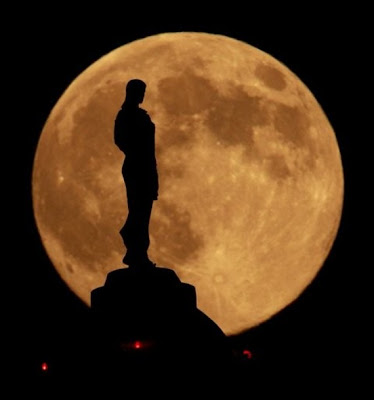
glimpse,
sense,
presence,
ghost in the mirror,
wetness,
coldness,
odor,
skeleton dances slowly,
candle,
web,
moon,
wind in the room,
spider,
owl,
raven,
blood drips quietly,
touch,
hold,
release,
woman in the painting,
old man,
bolts awake,
from a dream,
"who's there?"
woman in the painting whispers,
"It is the dead, they pray for you."
-------------------------------------------------------------------------------------------------
a comment from Old Olie got me thinking...
from Wikipedia:
Samhain marked the end of the harvest, the end of the "lighter half" of the year and beginning of the "darker half". It was traditionally celebrated over the course of several days. Many scholars believe that it was the beginning of the Celtic year. It has some elements of a festival of the dead. The Gaels believed that the border between this world and the otherworld became thin on Samhain; because so many animals and plants were dying, it thus allowed the dead to reach back through the veil that separated them from the living. Bonfires played a large part in the festivities. People and their livestock would often walk between two bonfires as a cleansing ritual, and the bones of slaughtered livestock were cast into its flames.
The Gaelic custom of wearing costumes and masks, was an attempt to copy the spirits or placate them. In Scotland the dead were impersonated by young men with masked, veiled or blackened faces, dressed in white. Samhnag — turnips which were hollowed-out and carved with faces to make lanterns — were also used to ward off harmful spirits.
The Gaelic festival became associated with the Catholic All Saints' Day and All Souls' Day, and has hugely influenced the secular customs now connected with Halloween, a name first attested in the 16th century as a Scottish shortening of the fuller All-Hallows-Even. Samhain continues to be celebrated as a religious festival by some neopagans.












